Itinerary
Basel is a city in northwestern Switzerland on the Swiss, French and German borders. It is located on the bend of the River Rhine and benefits from a Mediterranean climate. It is the third most populated city in Switzerland and has been the commercial hub for Swiss arts and culture since the Renaissance. In 1967 the people of Basel voted to acquire two paintings by Picasso, who was so moved by the Basel people that he donated 3 paintings and a study to the city’s Kunstmuseum (Museum of Fine Arts). Visit the Augusta Raurica, one of the largest Roman archaeology parks in Switzerland, and enjoy a river crossings over the River Rhine by non-motorised ferries. During the summer months, time is spent outdoors, either swimming in the River Rhine, dining al fresco, enjoying open air concerts, cinema, street parties and festivals. Basel is home to over 20 restaurants that have won GaultMillau or Michelin awards, and boasts Switzerland’s largest collection of theatre shows, including modern contemporary dance, touring and puppetry theatre.
Day programme:
EMBARKATION – BASEL, SWITZERLAND. Embark the ship. Tonight, gather on board and meet your fellow passengers. (D)
Breisach is a town located in Southwest Germany on the French border. The town is situated in the Rhine Valley on the banks of the river Rhine and dates back over four thousand years. Breisach and its history can be experienced through the City History Museum, which houses a permanent exhibition taking you from Stone Age through the Celtic, to the Romans and Middle Ages, right up to modern day. St Stephen’s Cathedral is home to the city’s famous art treasures, the wheel wells, which are housed in the neighbouring Radbrunnenturm with the forty one metre deep water well. The cathedral is also home to many other treasures including the High Altar of Master HL and wall paintings by Martin Schongauer as well as High Gothic and Roman architecture. A visit to the Blue House, the former Jewish Community Centre, is highly recommended. Now owned by the Friends of Former Jewish Community House Breisach it exhibits memorials to Breisach’s Jewish heritage.
Day programme:
BREISACH, GERMANY. Breisach is your gateway to several different excursions, depending on your interests. Step back in time with a visit to the enchanting Alsatian town of Riquewihr, which looks almost the same as it did in the 16th century. On your walking tour, admire historic architecture as well as famous sights, such as the Dolder Gate. Alternatively, you may wish to go to Freiburg, founded in 1120 and home to the Freiburg’s Münster, a Gothic cathedral said to have “the most beautiful spire on earth.” Those wishing a more active excursion can cycle through the scenic countryside, or go on a hike to the Black Forest, a magical land full of cultural traditions. (B,L,D)
Day programme:
STRASBOURG, FRANCE. Strasbourg, the capital city of Alsace, offers flavors of both France and Germany because of its borderline location. Enjoy a panoramic tour past the stunning Parc de l’Orangerie, the European Parliament and the Place de la République. Then walk through its iconic UNESCO World Heritage “La Petite France” district, which appears to have been lifted straight from the pages of a fairytale. Wander through these charming streets and past the Cathédrale de Nôtre Dame with its famous astronomical clock. For the active adventurer, you can take a guided bike ride through this captivating city and Parc de l’Orangerie. (B,L,D)
Day programme:
LUDWIGSHAFEN, GERMANY – RÜDESHEIM. Ludwigshafen is your gateway to a choice of three excursions. Visit Heidelberg, the perfectly preserved medieval city nestled in the Neckar River Valley along Germany’s Castle Road. Discover the iconic red sandstone Heidelberg Castle and Great Vat, an 18th-century 49,000-gallon wine cask. For a more active adventure while in Heidelberg, join a guided hike up the Philosopher’s Path, aptly named during the Romantic Period, and be rewarded with panoramic views of the city. Alternatively, you can visit one of Germany’s oldest cities, Speyer, known for the largest Romanesque cathedral in Europe—a UNESCO World Heritage Site—and the medieval Altpörtel, Old Gate. Later in the day, sail to Rüdesheim where you can visit Siegfried’s Mechanical Instrument Cabinet; or taste one of the town’s special delights, Rüdesheimer Coffee, ceremoniously made with brandy. (B,L,D)
Rudesheim am Rhine is a town in the Rhine Valley in Germany and part of the UNESCO World Heritage Site of Rhine Gorge. It is known for its production of Riesling wine and has been popular for its wine making since ancient times. The Medieval Bromserburg Castle is home to the Rheingau Wine Museum and wine is a crucial part of Rudesheimer culture. The town is surrounded with vineyards and wineries, as well as many local wine bars and seasonal wine taverns. Wine tasting is a must do in Rudesheim and dining out is a great accompaniment. The local cuisine is seasonal and is closely intertwined with the wine growing traditions together with soups such as Zwiebelkuchen, Handkäs mit Musik and Spundekäs. Nordic Walking is popular around town, with five adventure trails around the vicinity, as well as many popular cycling routes. Great views of the town can be found from the water, the cable car to Niederwald Monument and the Monument itself. Old Town has the best examples of the town’s architecture with Eagle Tower, Oberstrasse and Rheinstein Castle some key sites to visit.
Rudesheim am Rhine is a town in the Rhine Valley in Germany and part of the UNESCO World Heritage Site of Rhine Gorge. It is known for its production of Riesling wine and has been popular for its wine making since ancient times. The Medieval Bromserburg Castle is home to the Rheingau Wine Museum and wine is a crucial part of Rudesheimer culture. The town is surrounded with vineyards and wineries, as well as many local wine bars and seasonal wine taverns. Wine tasting is a must do in Rudesheim and dining out is a great accompaniment. The local cuisine is seasonal and is closely intertwined with the wine growing traditions together with soups such as Zwiebelkuchen, Handkäs mit Musik and Spundekäs. Nordic Walking is popular around town, with five adventure trails around the vicinity, as well as many popular cycling routes. Great views of the town can be found from the water, the cable car to Niederwald Monument and the Monument itself. Old Town has the best examples of the town’s architecture with Eagle Tower, Oberstrasse and Rheinstein Castle some key sites to visit.
Day programme:
RÜDESHEIM – RHINE GORGE. Your exploration of Rüdesheim continues with your choice of three excursions. Take a gondola ride to the Niederwalddenkmal Statue, where you can enjoy panoramic views of the river. Afterwards, indulge your taste buds with a sampling of Riesling wines in the vineyards. If you prefer a more active adventure, you can join a guided bike ride through the town and along the Rhine River to Schloss Johannisberg or hike through the town’s beautiful vineyards. During the afternoon, set sail along the scenic Rhine River Gorge with its fabled legends and many castles to Lahnstein where you’ll enjoy a visit to Lahneck Castle. (B,L,D)
Cologne is a city in western Germany located across the Rhine river. It is the oldest in Germany, dating back 2000 years and is considered the region’s cultural hub. The city is known for its iconic landmark of the twin-spired Cologne Cathedral set against the reconstructed Old Town buildings. When in Old Town, visit the historic Old Town Hall and the Roman Church Great St Martin, or take time out and sit at one of the traditional breweries and enjoy the scenery around you. Historical sites such as the Roman Dionysus mosaic and the medieval Overstolzenhaus are worth a visit too. Another iconic sight in Cologne is at Hohenzollern Bridge. Here, local and tourist couples affix padlocks to the railings of the bridge and swear their loyalty to each other, they then throw the key into the Rhein to ensure everlasting love. Cologne is home to over 30 stages providing cabaret, free ensembles, theatre and dance and also celebrates its openly gay culture.
Day programme:
COLOGNE. Enjoy cruising to Cologne, then join a guided tour through the enchanting Old Town, where you will see sites such as the Cologne Rathaus, Germany’s oldest town hall; the Fishmarkt, which dates back to the 12th century and the Great St. Martin Church. End your city tour with a visit to a local tavern to taste its famous Kölsch beer. As an alternative, examine the historic architectural styles on display throughout the Cologne Cathedral during a guided tour. This 13th-century Gothic marvel and UNESCO World Heritage Site was the tallest building in the world at the time of its completion, and the church withstood 14 hits from aerial bombs during World War II. Active guests will want to join a guided bike ride along the Rhine and through the historic Stadtgarten. (B,L,D)
Amsterdam combines the unrivaled beauty of the 17th-century Golden Age city center with plenty of museums and art of the highest order, not to mention a remarkably laid-back atmosphere. It all comes together to make this one of the world’s most appealing and offbeat metropolises in the world. Built on a latticework of concentric canals like an aquatic rainbow, Amsterdam is known as the City of Canals—but it’s no Venice, content to live on moonlight serenades and former glory. Quite the contrary: on nearly every street here you’ll find old and new side by side—quiet corners where time seems to be holding its breath next to streets like neon-lit Kalverstraat, and Red Light ladies strutting by the city’s oldest church. Indeed, Amsterdam has as many lovely facets as a 40-carat diamond polished by one of the city’s gem cutters. It’s certainly a metropolis, but a rather small and very accessible one. Locals tend to refer to it as a big village, albeit one that happens to pack the cultural wallop of a major world destination. There are scores of concerts every day, numerous museums, summertime festivals, and, of course, a legendary year-round party scene. It’s pretty much impossible to resist Amsterdam’s charms. With 7,000 registered monuments, most of which began as the residences and warehouses of humble merchants, set on 160 man-made canals, and traversed by 1,500 or so bridges, Amsterdam has the largest historical inner city in Europe. Its famous circle of waterways, the grachtengordel, was a 17th-century urban expansion plan for the rich and is a lasting testament to the city’s Golden Age. This town is endearing because of its kinder, gentler nature—but a reputation for championing sex, drugs, and rock ’n’ roll does not alone account for Amsterdam’s being one of the most popular destinations in Europe: consider that within a single square mile the city harbors some of the greatest achievements in Western art, from Rembrandt to Van Gogh. Not to mention that this is one of Europe’s great walking cities, with so many of its treasures in the untouted details: tiny alleyways barely visible on the map, hidden garden courtyards, shop windows, floating houseboats, hidden hofjes(courtyards with almshouses), sudden vistas of church spires, and gabled roofs that look like so many unframed paintings. And don’t forget that the joy lies in details: elaborate gables and witty gable stones denoting the trade of a previous owner. Keep in mind that those XXX symbols you see all over town are not a mark of the city’s triple-X reputation. They’re part of Amsterdam’s official coat of arms—three St. Andrew’s crosses, believed to represent the three dangers that have traditionally plagued the city: flood, fire, and pestilence. The coat’s motto (“Valiant, determined, compassionate”) was introduced in 1947 by Queen Wilhelmina in remembrance of the 1941 February Strike in Amsterdam—the first time in Europe that non-Jewish people protested against the persecution of Jews by the Nazi regime.
Day programme:
AMSTERDAM, THE NETHERLANDS. Amsterdam boasts amazing history, art, architecture, and museums, and you have a choice as to how you wish to explore it. The famous canals of Amsterdam await discovery on your city tour beginning with a scenic canal cruise followed by a walk to Begijnhof, known for its Middle Age buildings. For a different view of the city, you can join the Jordaan tour. (B,L,D) *Depending on docking location, Jordaan Tour may not operate; therefore, an alternative tour will operate instead.
Amsterdam combines the unrivaled beauty of the 17th-century Golden Age city center with plenty of museums and art of the highest order, not to mention a remarkably laid-back atmosphere. It all comes together to make this one of the world’s most appealing and offbeat metropolises in the world. Built on a latticework of concentric canals like an aquatic rainbow, Amsterdam is known as the City of Canals—but it’s no Venice, content to live on moonlight serenades and former glory. Quite the contrary: on nearly every street here you’ll find old and new side by side—quiet corners where time seems to be holding its breath next to streets like neon-lit Kalverstraat, and Red Light ladies strutting by the city’s oldest church. Indeed, Amsterdam has as many lovely facets as a 40-carat diamond polished by one of the city’s gem cutters. It’s certainly a metropolis, but a rather small and very accessible one. Locals tend to refer to it as a big village, albeit one that happens to pack the cultural wallop of a major world destination. There are scores of concerts every day, numerous museums, summertime festivals, and, of course, a legendary year-round party scene. It’s pretty much impossible to resist Amsterdam’s charms. With 7,000 registered monuments, most of which began as the residences and warehouses of humble merchants, set on 160 man-made canals, and traversed by 1,500 or so bridges, Amsterdam has the largest historical inner city in Europe. Its famous circle of waterways, the grachtengordel, was a 17th-century urban expansion plan for the rich and is a lasting testament to the city’s Golden Age. This town is endearing because of its kinder, gentler nature—but a reputation for championing sex, drugs, and rock ’n’ roll does not alone account for Amsterdam’s being one of the most popular destinations in Europe: consider that within a single square mile the city harbors some of the greatest achievements in Western art, from Rembrandt to Van Gogh. Not to mention that this is one of Europe’s great walking cities, with so many of its treasures in the untouted details: tiny alleyways barely visible on the map, hidden garden courtyards, shop windows, floating houseboats, hidden hofjes(courtyards with almshouses), sudden vistas of church spires, and gabled roofs that look like so many unframed paintings. And don’t forget that the joy lies in details: elaborate gables and witty gable stones denoting the trade of a previous owner. Keep in mind that those XXX symbols you see all over town are not a mark of the city’s triple-X reputation. They’re part of Amsterdam’s official coat of arms—three St. Andrew’s crosses, believed to represent the three dangers that have traditionally plagued the city: flood, fire, and pestilence. The coat’s motto (“Valiant, determined, compassionate”) was introduced in 1947 by Queen Wilhelmina in remembrance of the 1941 February Strike in Amsterdam—the first time in Europe that non-Jewish people protested against the persecution of Jews by the Nazi regime.
Day programme:
AMSTERDAM – DISEMBARKATION. Bid Farewell to Amsterdam and prepare for your homeward flight. (B)
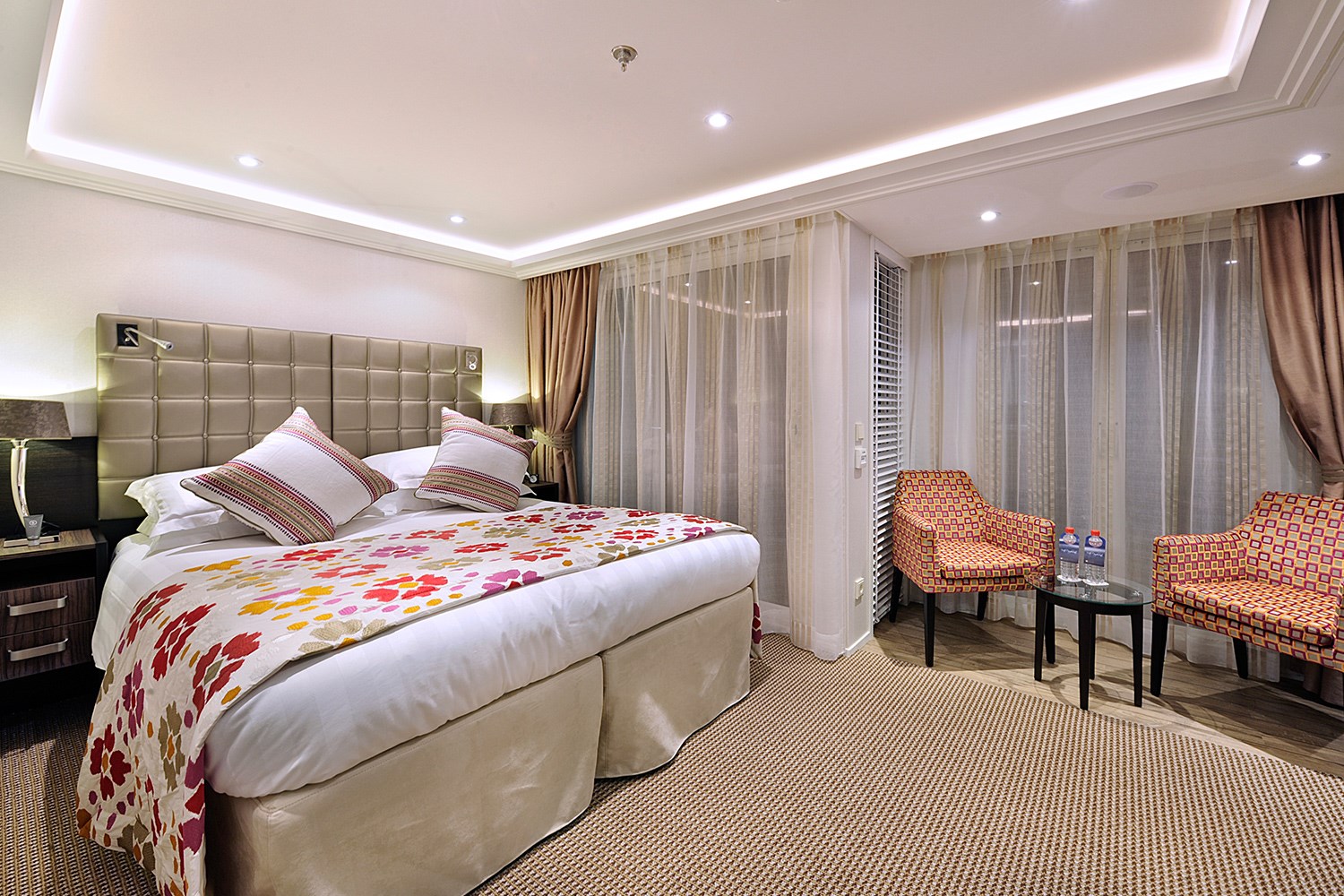
Stateroom Features
- In-room temperature control
- Spacious bathrooms with multi-jet showerheads
- Large wardrobe, full-length mirror, hair dryer, safe and direct-dial telephone
- Flat-screen TV
- Entertainment on Demand system providing complimentary TV, movies and music library
- Complimentary bottled water replenished daily
- Complimentary internet and Wi-Fi
- Desk and chair
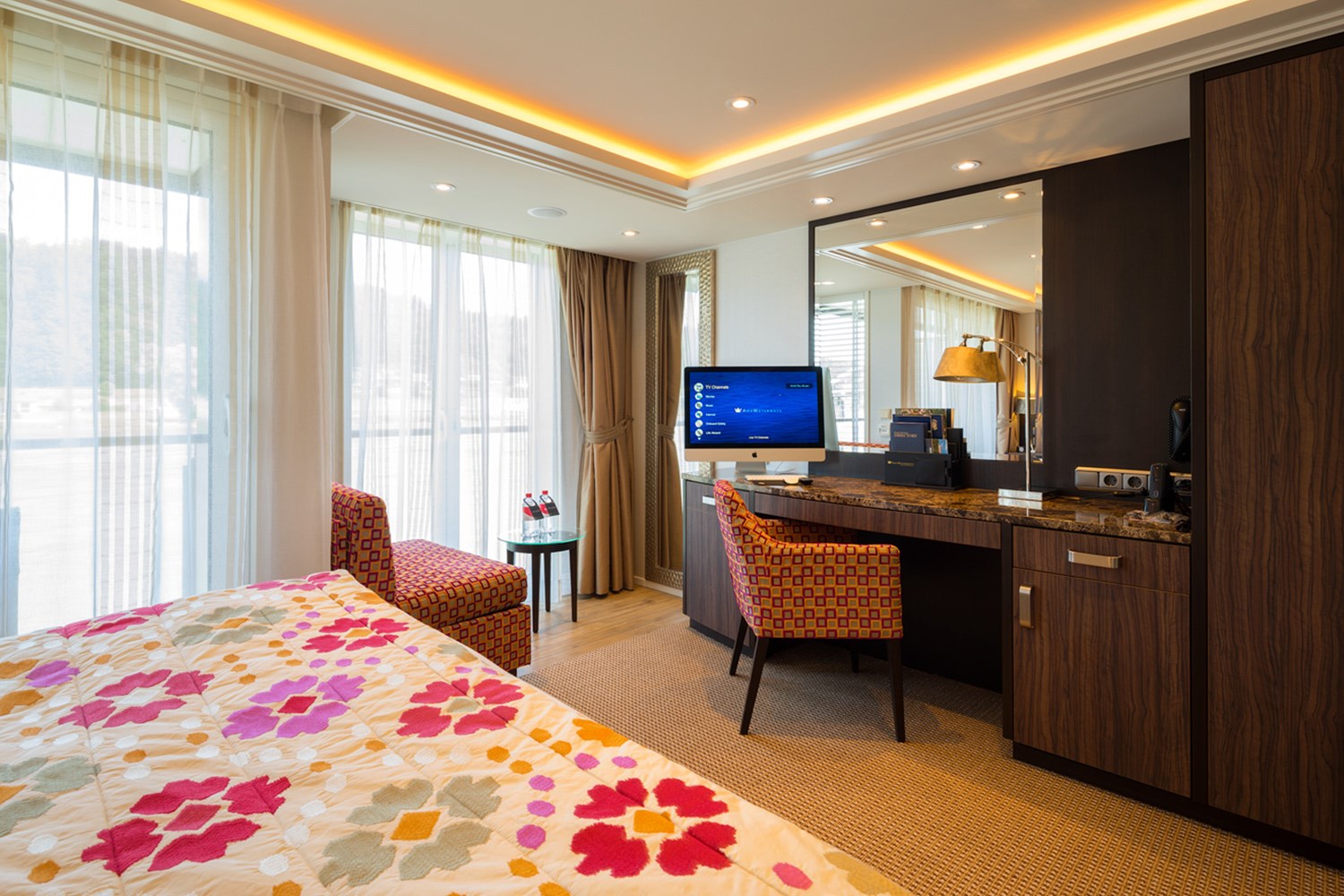
Stateroom Features
- In-room temperature control
- Spacious bathrooms with multi-jet showerheads
- Large wardrobe, full-length mirror, hair dryer, safe and direct-dial telephone
- Flat-screen TV
- Entertainment on Demand system providing complimentary TV, movies and music library
- Complimentary bottled water replenished daily
- Complimentary internet and Wi-Fi
- Desk and chair
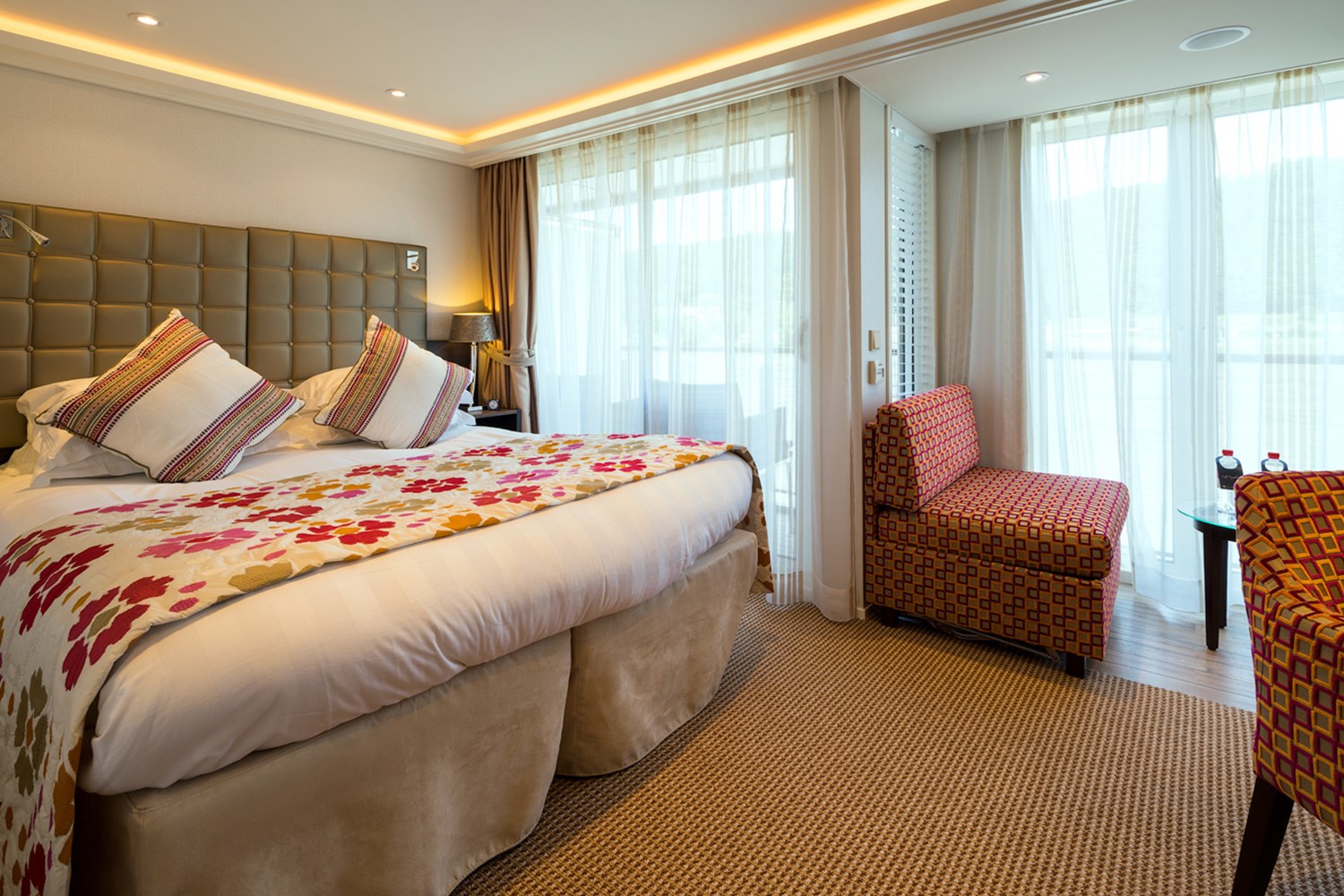
Stateroom Features
- In-room temperature control
- Spacious bathrooms with multi-jet showerheads
- Large wardrobe, full-length mirror, hair dryer, safe and direct-dial telephone
- Flat-screen TV
- Entertainment on Demand system providing complimentary TV, movies and music library
- Complimentary bottled water replenished daily
- Complimentary internet and Wi-Fi
- Desk and chair
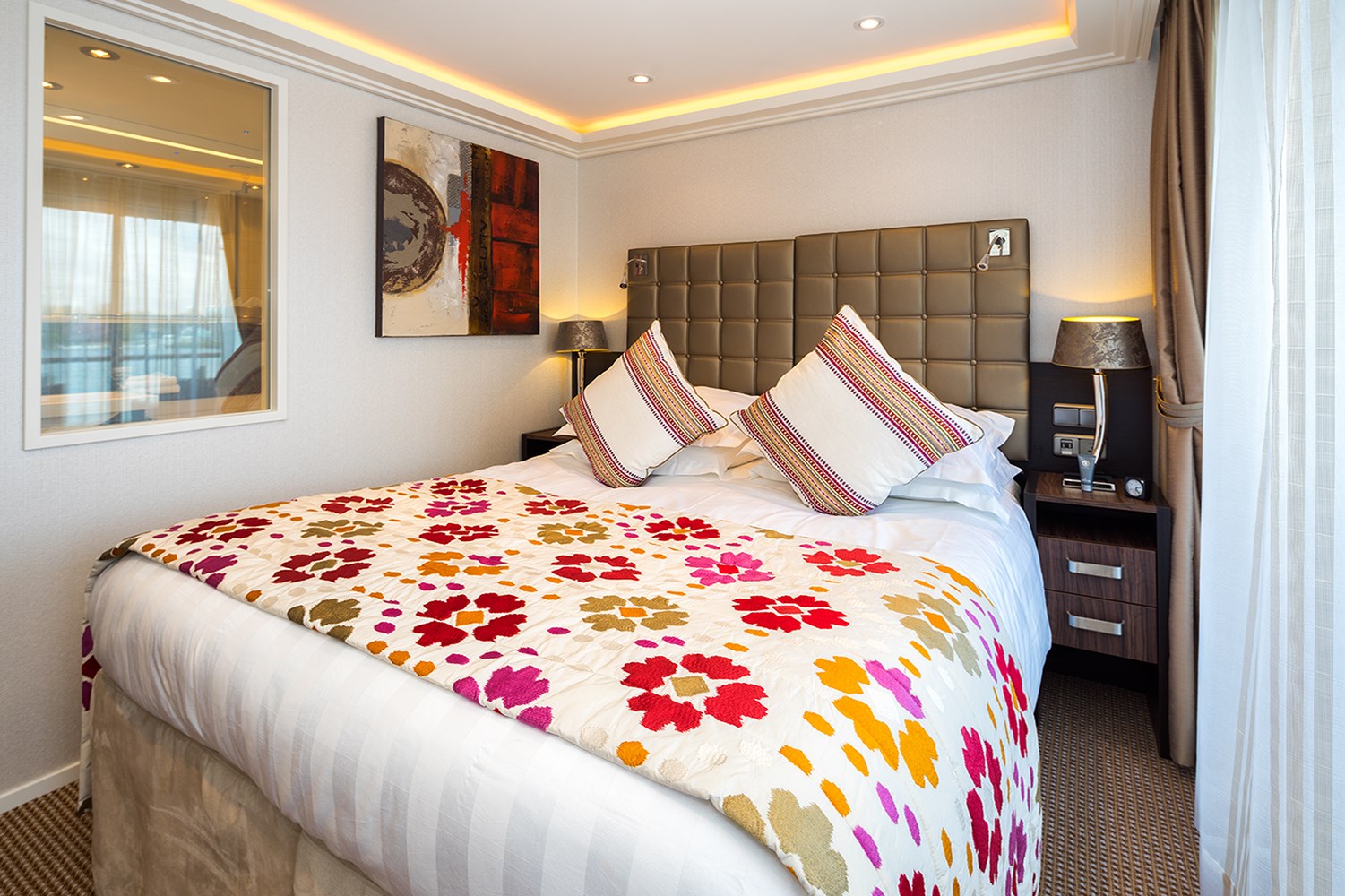
Stateroom Features
- In-room temperature control
- Spacious bathrooms with multi-jet showerheads
- Large wardrobe, full-length mirror, hair dryer, safe and direct-dial telephone
- Flat-screen TV
- Entertainment on Demand system providing complimentary TV, movies and music library
- Complimentary bottled water replenished daily
- Complimentary internet and Wi-Fi
- Desk and chair
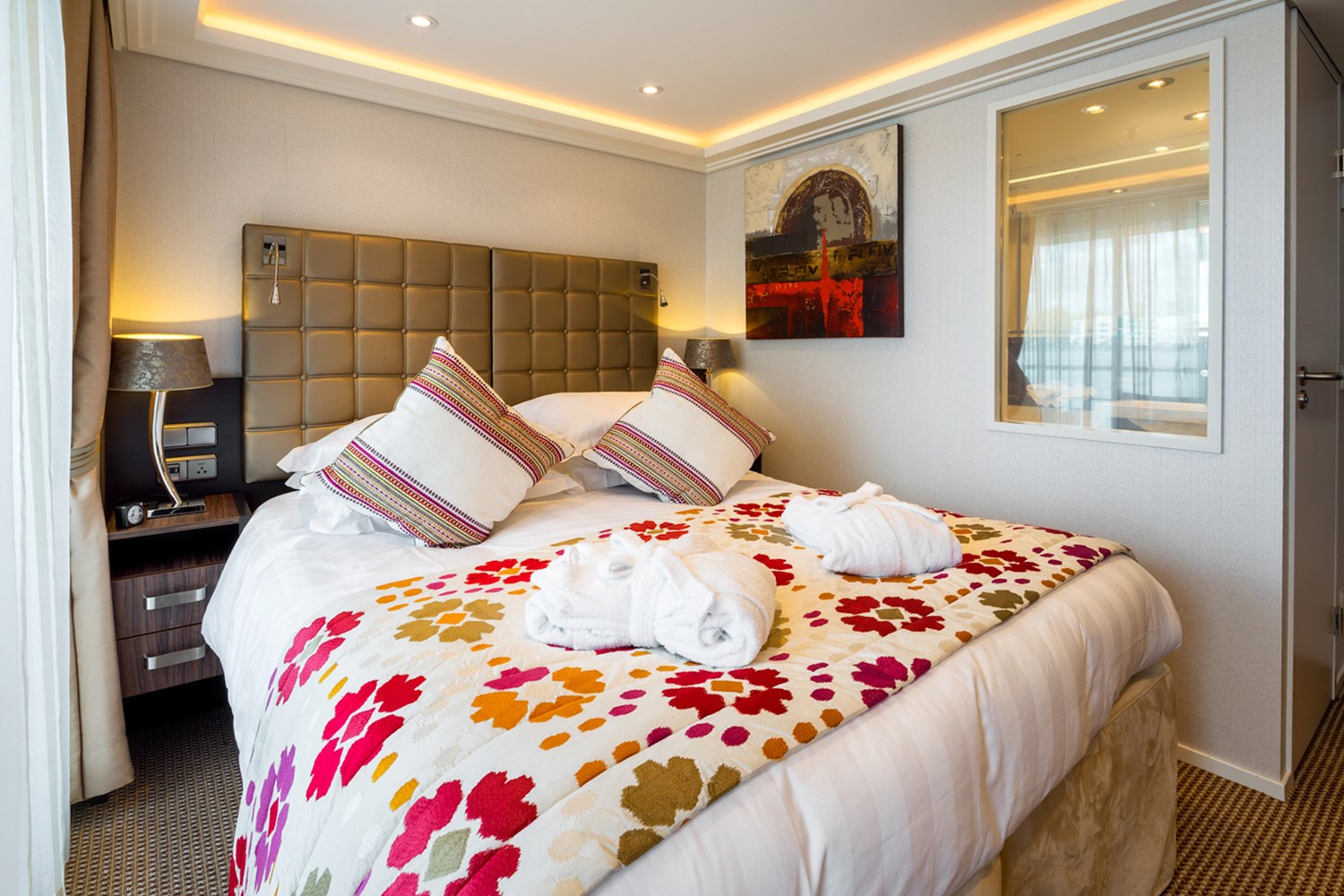
Stateroom Features
- In-room temperature control
- Spacious bathrooms with multi-jet showerheads
- Large wardrobe, full-length mirror, hair dryer, safe and direct-dial telephone
- Flat-screen TV
- Entertainment on Demand system providing complimentary TV, movies and music library
- Complimentary bottled water replenished daily
- Complimentary internet and Wi-Fi
- Desk and chair
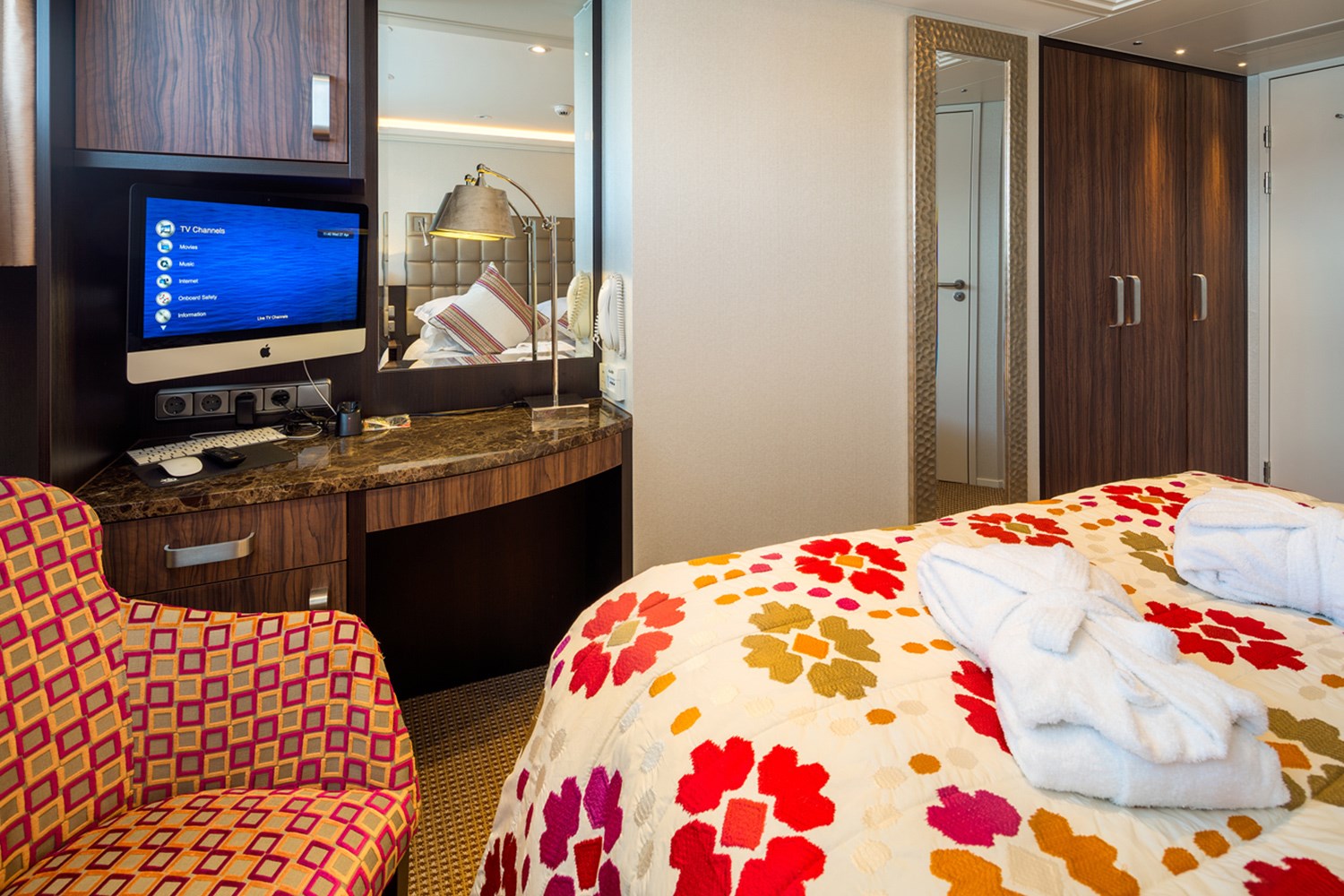
Stateroom Features
- In-room temperature control
- Spacious bathrooms with multi-jet showerheads
- Large wardrobe, full-length mirror, hair dryer, safe and direct-dial telephone
- Flat-screen TV
- Entertainment on Demand system providing complimentary TV, movies and music library
- Complimentary bottled water replenished daily
- Complimentary internet and Wi-Fi
- Desk and chair

Stateroom Features
- In-room temperature control
- Spacious bathrooms with multi-jet showerheads
- Large wardrobe, full-length mirror, hair dryer, safe and direct-dial telephone
- Flat-screen TV
- Entertainment on Demand system providing complimentary TV, movies and music library
- Complimentary bottled water replenished daily
- Complimentary internet and Wi-Fi
- Desk and chair

Stateroom Features
- In-room temperature control
- Spacious bathrooms with multi-jet showerheads
- Large wardrobe, full-length mirror, hair dryer, safe and direct-dial telephone
- Flat-screen TV
- Entertainment on Demand system providing complimentary TV, movies and music library
- Complimentary bottled water replenished daily
- Complimentary internet and Wi-Fi
- Desk and chair
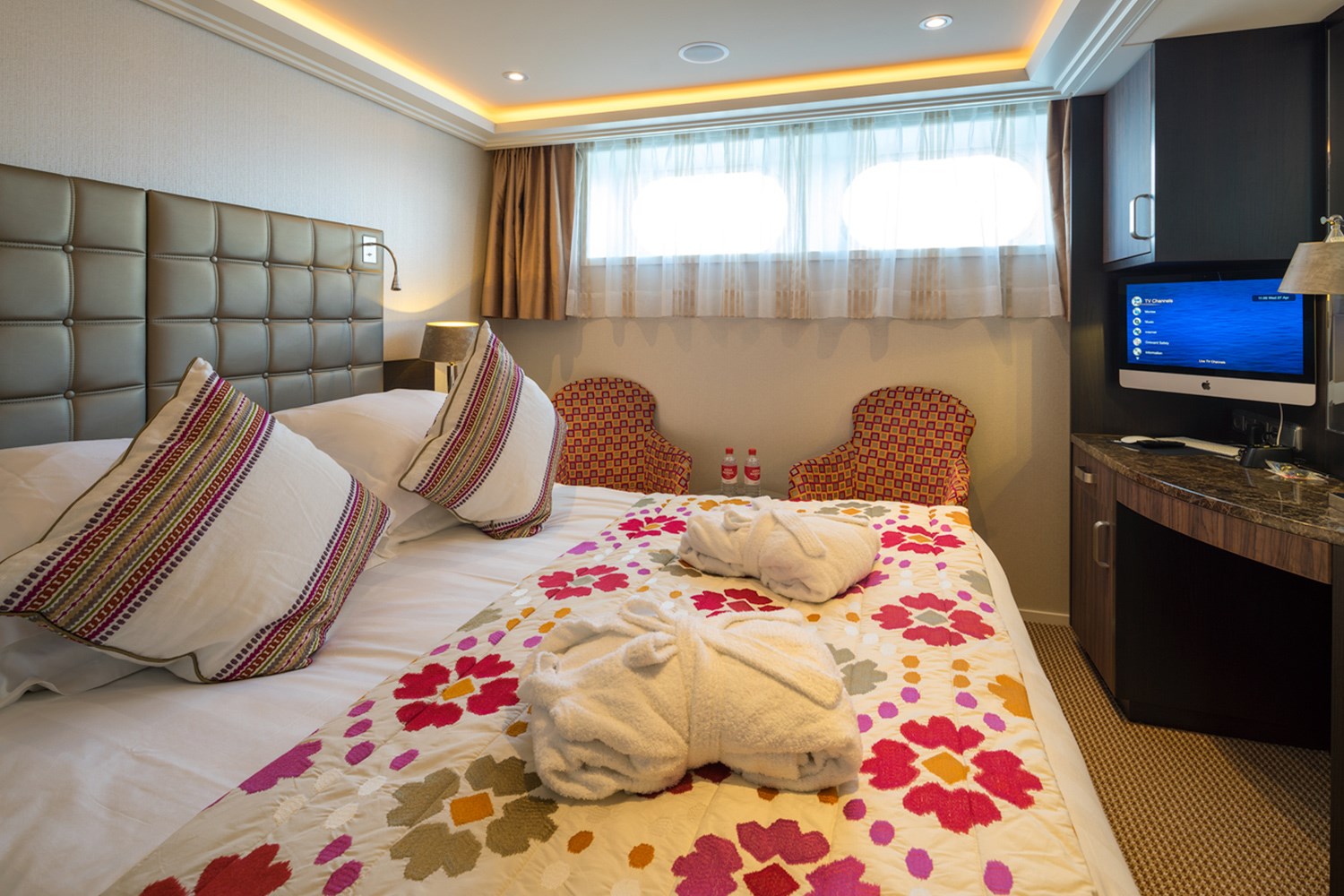
Stateroom Features
- In-room temperature control
- Spacious bathrooms with multi-jet showerheads
- Large wardrobe, full-length mirror, hair dryer, safe and direct-dial telephone
- Flat-screen TV
- Entertainment on Demand system providing complimentary TV, movies and music library
- Complimentary bottled water replenished daily
- Complimentary internet and Wi-Fi
- Desk and chair
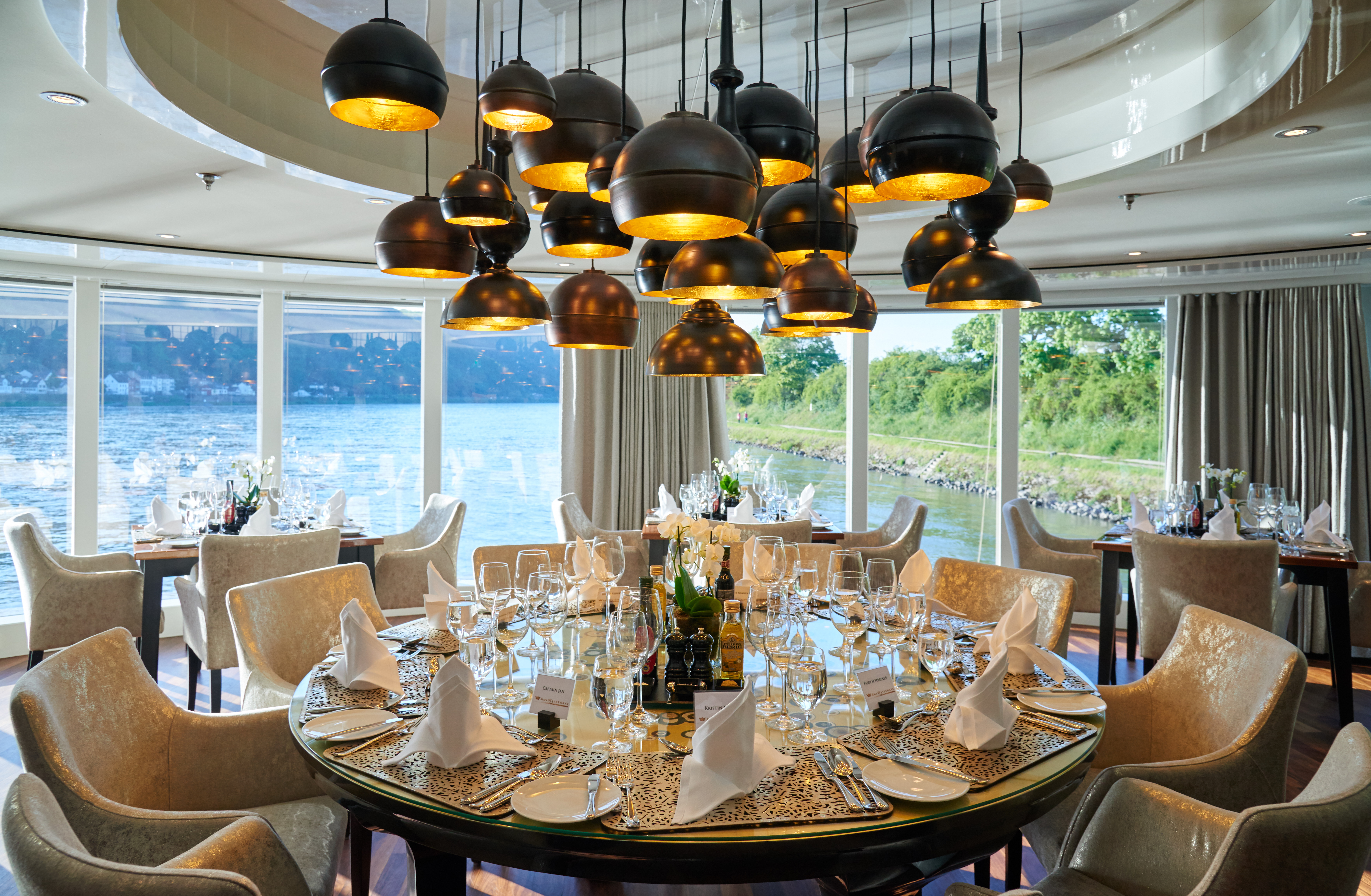
Join a few of your fellow travellers at The Chef’s Table, where the kitchen — usually hidden — becomes part of the entertainment. You’ll have the opportunity to watch the chef prepare a special multi-course meal right in front of you. The menu here is unique, making this a truly distinct gastronomic experience. Indulge in delectable dishes served with unlimited fine wines, hand-selected just for this dinner. It is the only venue of its kind on the river.
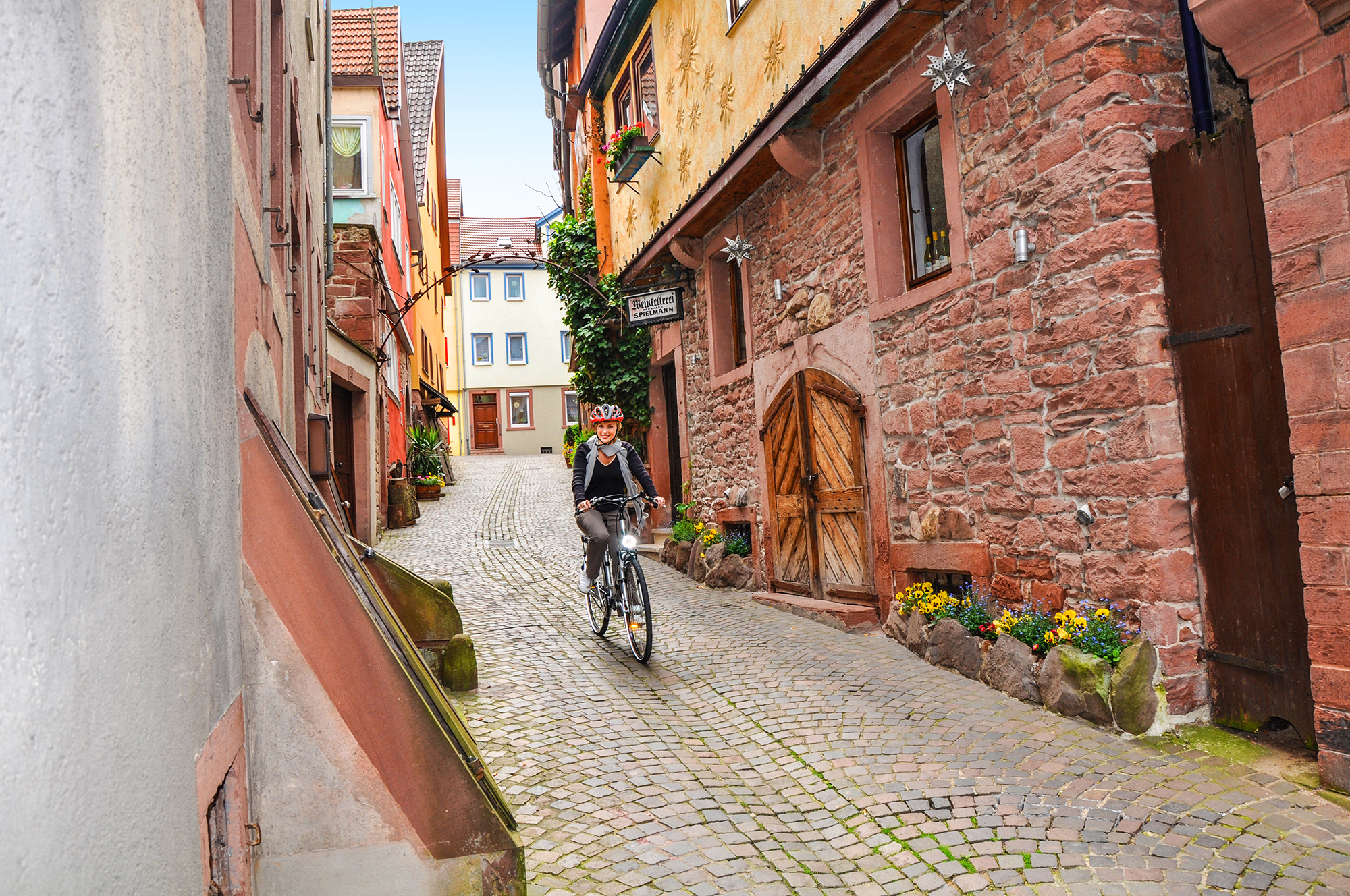
With AmaWaterways, you have the option of exploring Europe’s amazing sights like the locals do. We were the first river cruise line to carry an entire fleet of complimentary bicycles on board, so you can experience biking alongside enchanting riverside pathways and in city centres. Whether you feel like joining one of our exclusive guided bike tours, or want to go discover on your own, there are many ways for you to explore on two wheels during your cruise. Here are a few examples:
- Bike along the beautiful Danube River between Dürnstein and Melk in Austria’s Wachau Valley
- Tour Cologne’s Old Town and Cathedral along the Rhine River
- See the medieval city of Rouen in France’s historic Normandy region, near the Seine River
- Take in wooded hills and beaches of poplars along the scenic shores of the Inn River in Passau
- Go on a guided bike ride in Vienna, where you’ll visit Klosterneuberg Abbey and enjoy cake and coffee
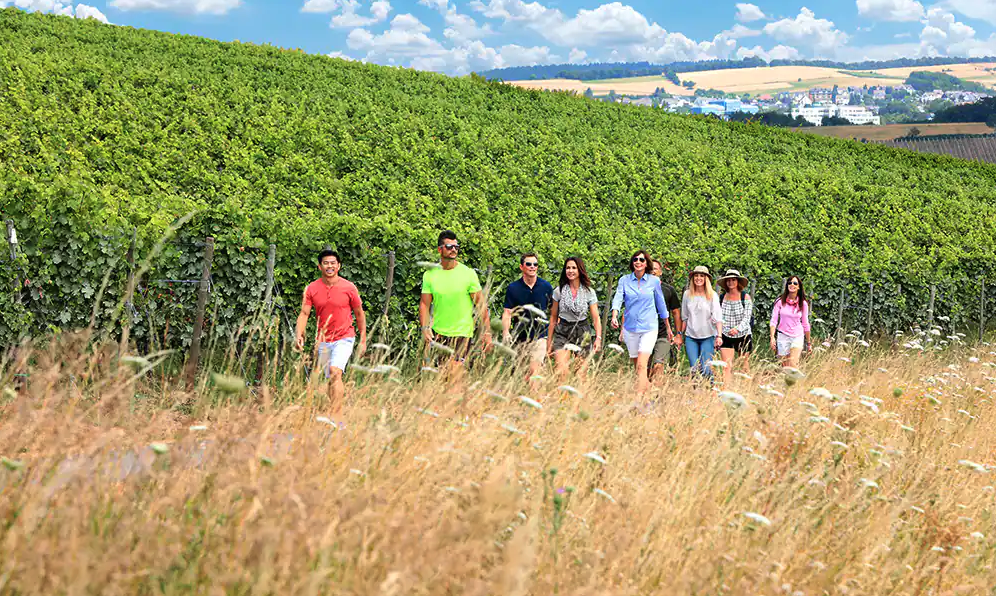
The beauty of Europe doesn’t just lie in its architecture and landmarks – there are also breath taking things to be seen when you venture out into nature. That’s why we’ve designed special hikes that will take you a bit off the beaten path in some very beautiful destinations.
- Trek up to the Veste Oberhaus in Passau, Germany for incredible views over Old Passau
- Make your way up to Dürnstein Fortress, where it is said that Richard the Lionheart was once held captive
- Hike up the Philosopher’s Path to a panoramic view of Heidelberg and the Necker River
- Journey from the ship to the Old Town in Strasbourg, France

We realise that our guests have different tastes, so we’ve developed a menu of shore excursions in every port of call. In many destinations, you’ll be free to choose from one of several options — all of which are included in your cruise fare. There’s always a city tour designed to show you all the renowned highlights and landmarks in grand capitals and charming villages alike. Is it your first time in Vienna? Opt for an unforgettable exploration of the major sights led by a local, English-speaking guide that is well versed in history and culture. Have you already been to Nuremberg? Instead of taking the city tour, indulge in a bratwurst and beer tasting on one of our Special Interest Tours, which are specially designed to place you in the midst of local life. Are you looking for something more active? See the beautiful scenery of Austria’s Wachau Valley with a guided bike tour along the Danube. The choice is yours.
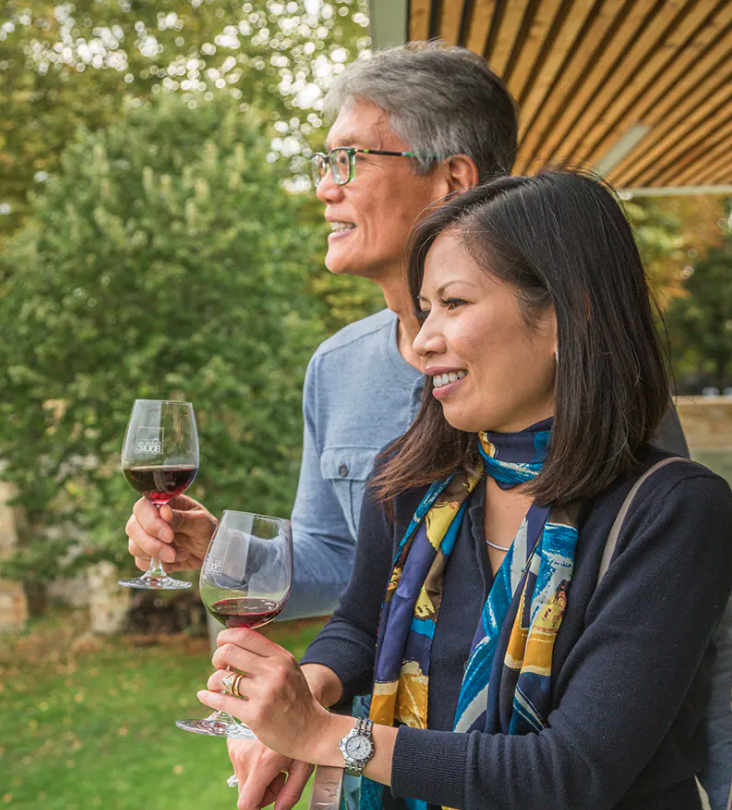
Every year, we seek out new opportunities for our guests to experience local culture in a unique way. These tours are specially designed to give small groups the chance to be even more immersed in a destination. Here are just a few examples:
- Indulge in authentic Belgian waffles and chocolate in Antwerp
- Try your hand at knotting a bretzel (German for “pretzel”) in Wertheim
- Go to a bratwurst and beer tasting at the oldest brewery in Nuremberg
- Discover hidden treasures on a tour of Vienna’s secret spots and sights
- Sample Bavarian specialties like pralines in Regensburg
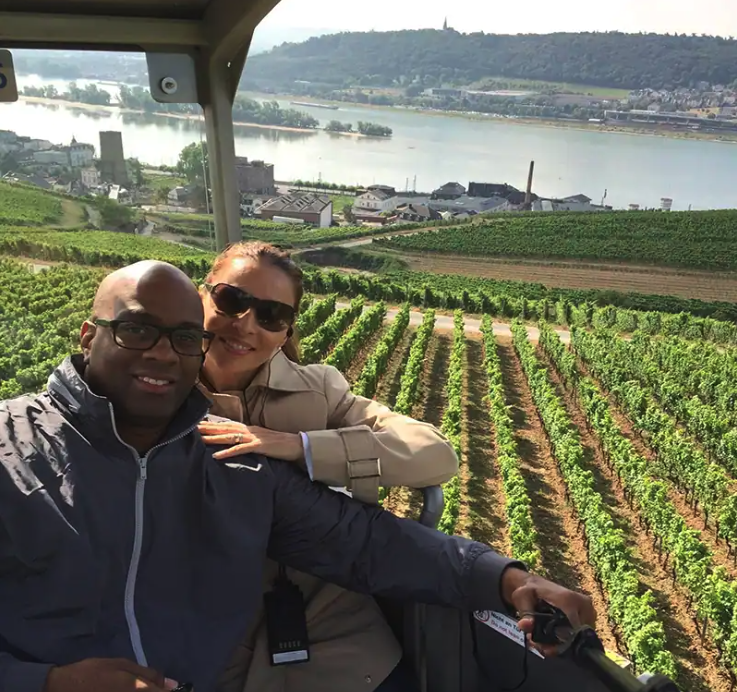
On an AmaWaterways river cruise, you don’t just pass through a destination — you experience it. Each one of our itineraries is crafted with a paramount goal in mind: connecting you to the essence of life in each place you visit. We always make it a point to place our guests in small groups. This helps facilitate access to sights and landmarks, a more intimate setting, and more encounters with the locals. It’s a great way to take your time as you explore, get to know your fellow travellers better and find opportunities for up-close experiences. Every tour is led by a local, English-speaking guide who is very knowledgeable in the culture and history of the place you are visiting.
Choose your pace: In many cases, you’ll have a choice of gentle, regular and active tour paces. There are even some options for late risers.

Make the most of your long-awaited vacation by adding our optional land packages before or after your sailing for an all-encompassing river cruise and land journey. Indulge your wanderlust and we’ll whisk you away between your ship and hotel, plus take you on specially curated guided tours with just the right amount of leisure time to explore the art, history or culinary delights in sought-after cities around the world.
Why Add a Land Package?
There are many benefits to adding a land package before or after your sailing. One of the simplest reasons is the convenience of making all your future travel plans in one step. Our concierge services allow you to reserve your river cruise, flights, airport transfers and land packages all at once. No need to call and research multiple providers – just contact your travel advisor and we’ll take care of it all. But the value of adding a land package doesn’t stop there.
World-Class Hotels
Whether you wish to rest and recover from flights or pamper yourself before returning home, you’ll find no better respite than the trusted, 4- and 5-star hotels we have carefully selected for you. Each luxurious property is centrally located near the major sights, such as Turkey’s Istanbul at Sultanahmet, just steps from the magnificent Blue Mosque. If you should wish to extend your vacation even further, your travel advisor can conveniently arrange extra hotel nights through AmaWaterways as well.
Our land packages include transfers between your hotel and river cruise ship, portage service and daily breakfast at the hotel. In addition, fascinating guided city tours and excursions are included, so you can:
- Discover breathtaking Mont St. Michel, France, the artistic inspiration for the movie Tangled
- Join a tasting of Czech beer while learning about the beverage’s long and illustrious history
- Visit Transylvania’s infamous Bran Castle, otherwise known as Dracula’s Castle
- Board a boat for a scenic ride along Italy’s Lake Como to the stunning lakeside village of Bellagio
- Rise with the sun at Cambodia’s UNESCO-designated Angkor Archaeological Complex
What’s Included in Your Land Package
- Overnight stays at 4- and 5-star hotels conveniently located near the major sites
- Daily breakfast at the hotel
- Guided city tours
- Convenient transfers to and from the ship
- The services of a professionally trained Cruise Manager throughout your river cruise and land stay – unique in the industry
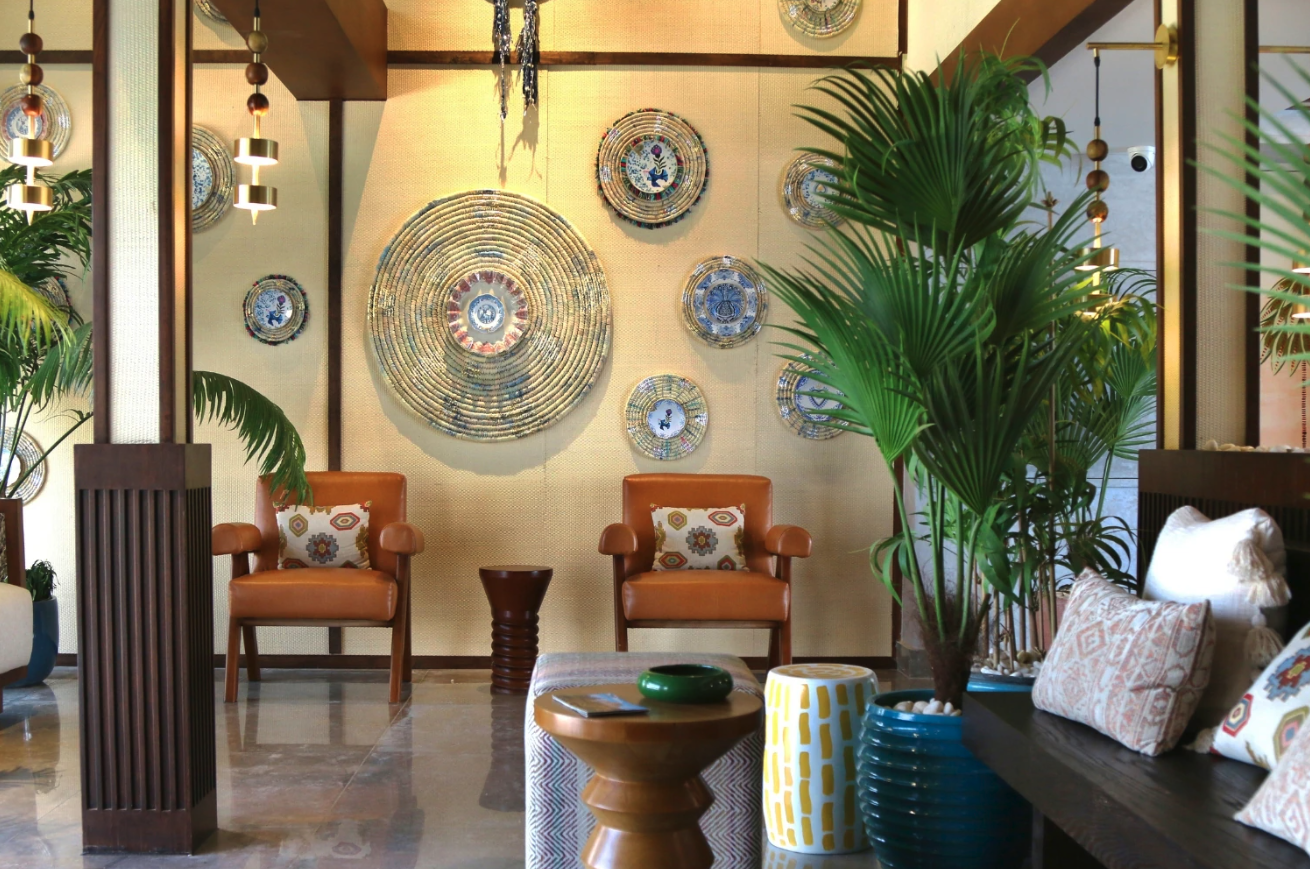
With fewer guests on board, you can enjoy the luxury of space to unwind, relax and reconnect with your loved ones. Our public areas, including lounges and restaurants, are never overcrowded.
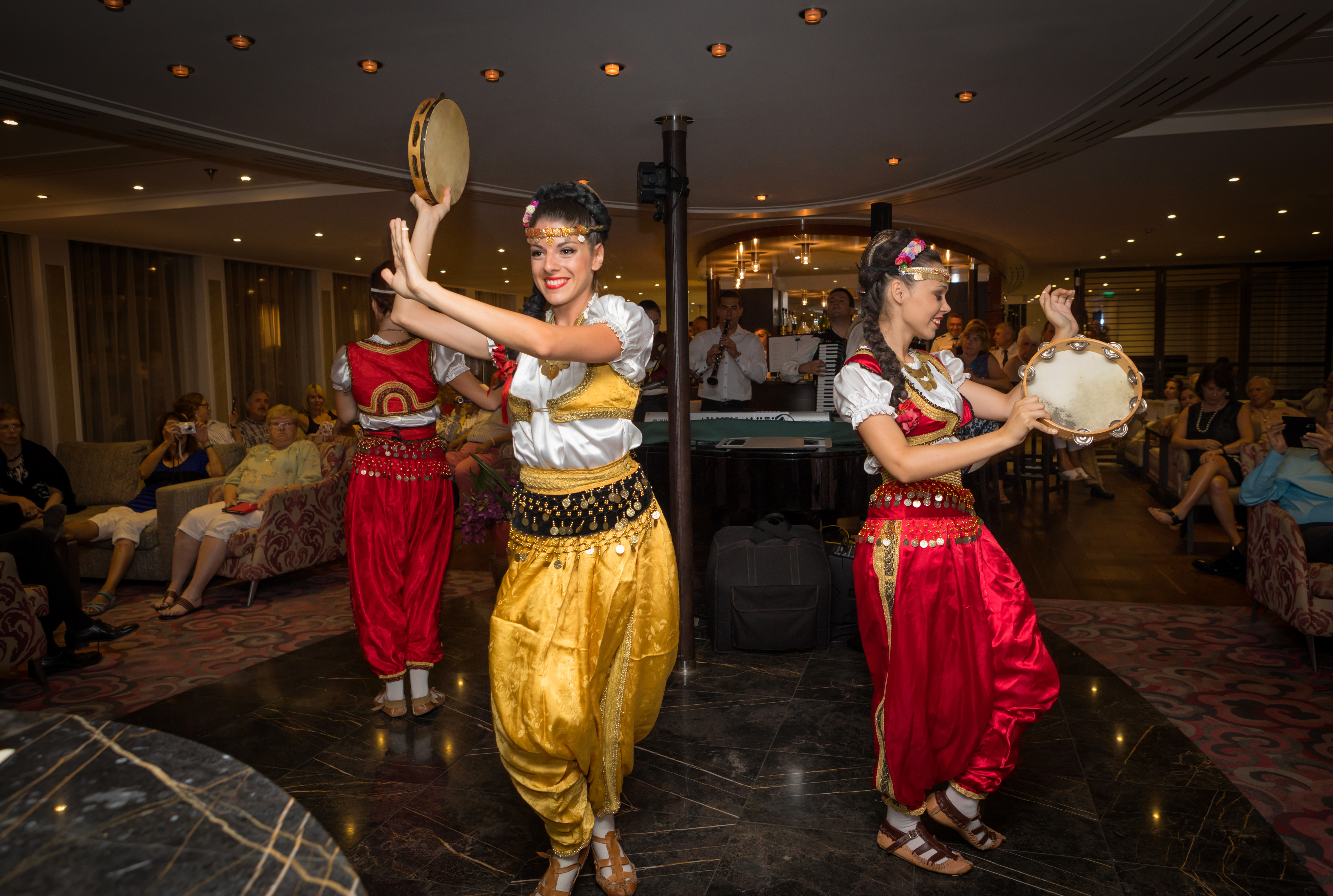
Whether it’s traditional Bavarian music, a local quartet or modern piano favorites, there is an eclectic schedule of entertainment on board.

Are you looking for a way to stay fit on vacation? Hit the treadmill or lift some weights while cruising from one destination to the next.
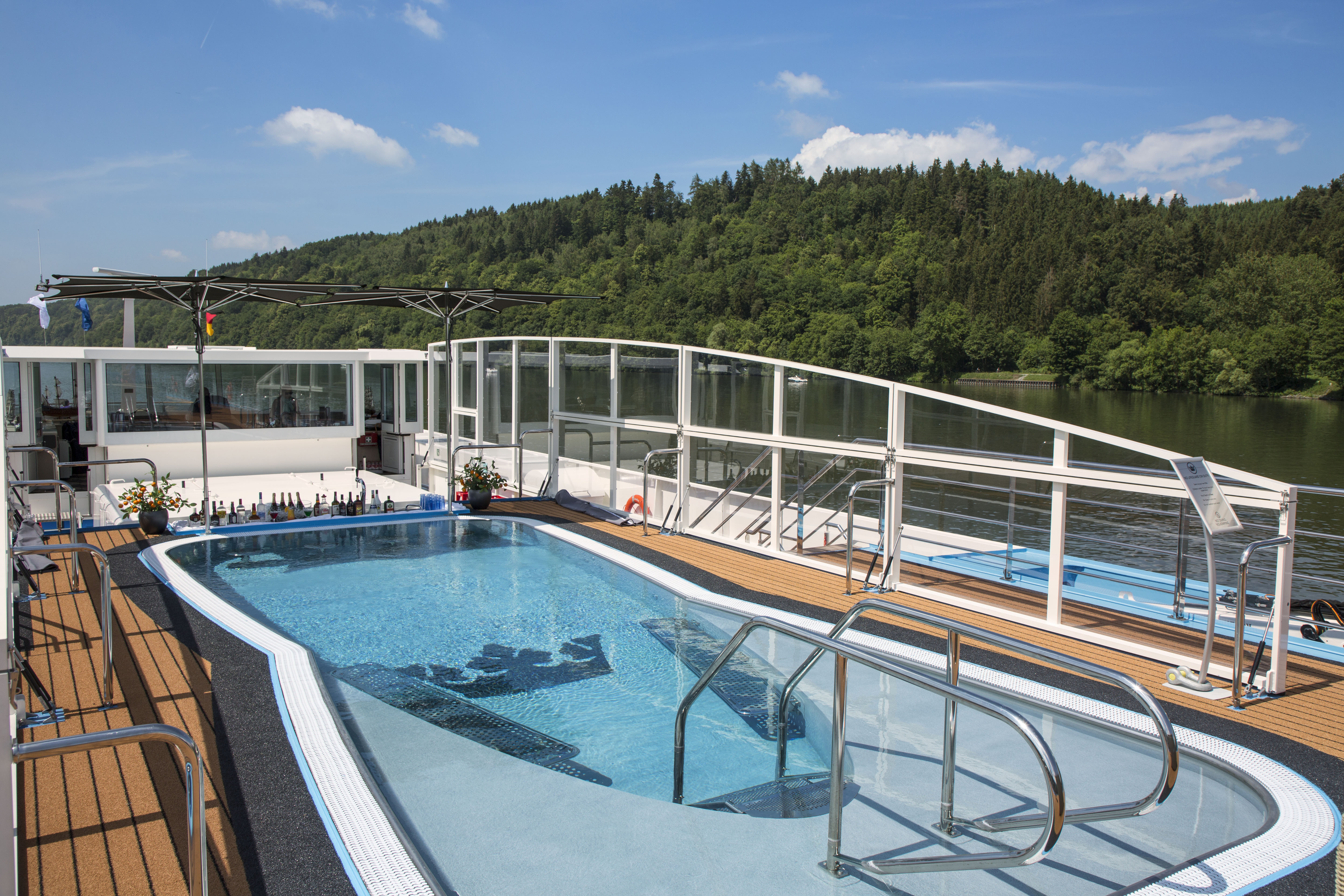
Soak up some rays or take a dip in our refreshing pool with a swim-up bar as we pass by centuries-old castles, charming villages and other breathtaking scenery.
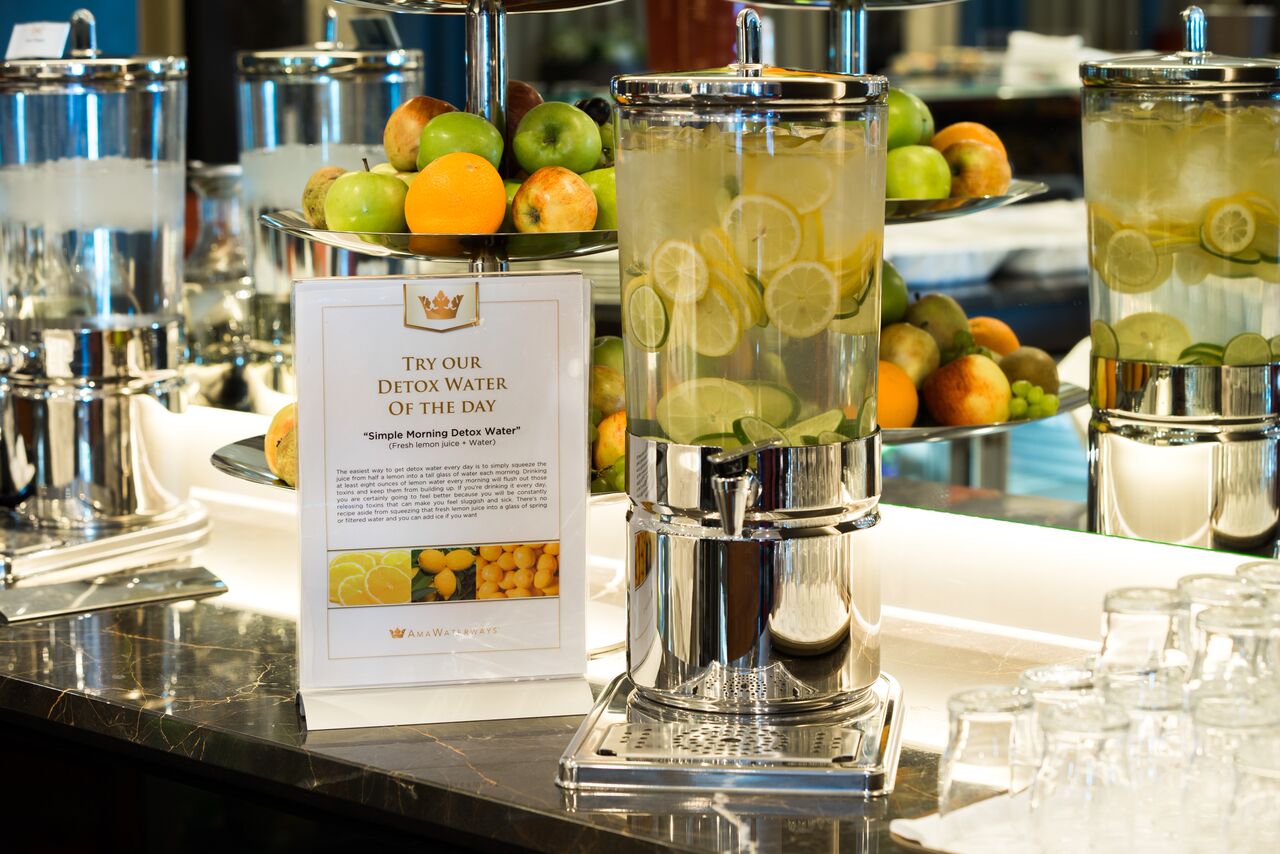
Lighter options are always available during meals as well as gluten free, vegetarian and low-sodium options. Discover the infused detox and gemstone water at our Hydration Station.

After a marvellous day of immersive shore excursions, return to the ship and treat yourself to a bit of pampering with a soothing massage.
Effective immediately, AmaWaterways will only be welcoming guests fully vaccinated against Covid-19 on board its ships. This vaccination requirement also applies to accompanied minors. Guests affected by this decision should contact their travel advisor for options to reschedule their river cruise.
On our programs in Europe and Southeast Asia, children under the age of 4 years old are not permitted on board and children 4-7 years old are not recommended. On our Africa safaris program, due to safety precautions, there is a minimum age limit of 12 years old, unless otherwise agreed upon by AmaWaterways. All guests under the age of 18 are to be in a stateroom with an adult, and must remain supervised at all times, as their safety is the responsibility of the accompanying adult(s). Children between the ages of 4 and 10 at the time of embarkation may share a stateroom with 2 adults provided the child is able to share the bed with the adults – no additional bed will be provided. Select ships offer a limited number of staterooms with a fold-out sofa for a triple occupant; we would be happy to guide you through these options when available. A triple occupancy rate will apply for the child sharing the stateroom; pricing can be provided upon request. Please be aware that balcony staterooms of any kind may be unsafe for small children if left unsupervised. AmaWaterways does not provide child-specific programs or child-minding facilities. Please reach out to us if you have any further questions regarding our child policy.
As of March 3, 2022, children 5 and older at time of sailing are still required to be vaccinated however, children that are not yet eligible for the vaccine are able to come onboard if they can provide a negative PCT test taken within 72 hours of embarkation.
Reasonable efforts are made to accommodate the special needs of disabled cruise participants, but no responsibility will be undertaken for any denial of services by carriers, hotels, restaurants, or other independent suppliers. Tour buses are not equipped with wheelchair ramps and cabin doors are not wide enough to allow access by standard wheelchairs.
Wheelchairs and walkers cannot be carried on tour buses, due to space limitations. Wheelchair passengers should be aware of these limitations. For safety reasons, passengers in wheelchairs cannot be carried on ramps in ports where the ship is at anchor. We regret that we cannot provide individual assistance to a tour member for walking, getting on/off tour busses and other transportation vehicles, or other personal needs. A qualified travel companion must accompany travellers who need assistance.
Smoking is not permitted anywhere inside any of the ships. Smoking is only permitted on the Sun Deck. For the safety and comfort of all passengers on board, your cooperation in observing the no-smoking policy is greatly appreciated.
Please advise your Travel Agent or call us directly to advise if you have any dietary restrictions or allergies prior to embarkation. In most cases, we will do our best to accommodate special dietary requests and food allergies, but with one exception: Kosher. This diet has specific rules regarding food and its preparation and the shipboard environment does have limitations that prevent us from being able to adequately cater to this dietary need. Please note, though we can provide options to accommodate food allergies and sensitivities, we cannot guarantee there will not be any cross-contamination.
Comfortable, layered clothing adaptable to changing weather conditions is always advisable for daytime excursions. For the evening, “Casually elegant” attire is recommend and you may want to pack something a little dressier for the Captain’s night/Farewell Dinner – similar to how one would dress to dine at a 5-star restaurant. Comfortable shoes are recommended for excursions and workout clothing if you plan to take part in any wellness activities, active tours or use the onboard gym. Depending on the time of year, clothing that can be layered is highly recommended.
Europe: There are no medical facilities on board. However medical services can easily be called from shore if required.
Vietnam & Cambodia: We do not employ doctors or nurses on board the ships. In the event medical assistance is needed, appropriate medical facilities will be contacted. Note that response time can vary.
Africa: We do not employ doctors or nurses on board the Zambezi Queen. In the event medical assistance is needed, appropriate medical facilities will be contacted. Note that response time can vary.
Europe: High-speed Internet service is available free of charge as part of the in-stateroom “Entertainment-On-Demand.” Additionally, AmaWaterways offers complimentary Wi-Fi throughout the ship.
Vietnam and Cambodia: Free Internet and Wi-Fi in the lounge with computer stations.
Africa: Free Wi Fi is available but may be limited and sporadic during certain times of the day due to the ships isolated location.

- Lower Sun Deck
- Navigation Bridge
- Bicycles
- Heated Pool
- Sun Deck
- Walking Track

- Al Fresco Terrace
- Observation Lounge
- Main Lounge & Bar
- Gift Shop
- Reception
- The Chef’s Table Restaurant
- Suites
- Cat AA Staterooms
- Cat BA Staterooms
- Cat CA Staterooms
- Cat CB Staterooms
- Elevator

- Main Restaurant
- Cat AB Staterooms
- Cat BB Staterooms
- Cat CA Staterooms
- Elevator

- Massage Room & Hair Salon
- Fitness Room
- Crew Cabins
- Cat D Staterooms
- Cat E Staterooms
- Elevator

